Last Updated on April 29, 2023
Do you want to seal concrete for protection against moisture, chemicals, and wear? PVA, or polyvinyl acetate, is a popular choice for sealing concrete as it offers superior adhesion, flexibility, and performance levels. It also provides an economical solution due to its low cost and easy application process.
In this blog post, we’ll be discussing the definition of PVA, its chemical makeup and different types available in the market, performance level variations between them in comparison to other materials used for sealing concrete, and the benefits of using PVA over those materials.
We’ll also provide an overview of the application process when sealing concrete with PVA sealants.
Can You Seal Concrete With PVA: Application Process
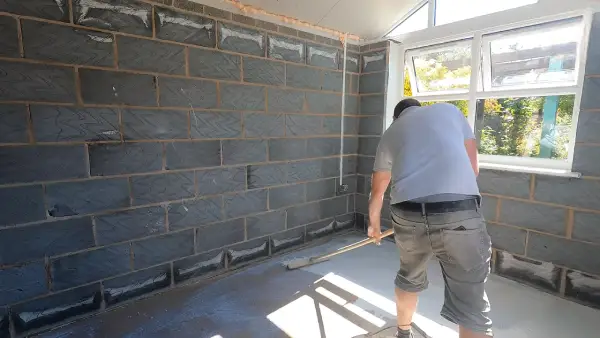
Prepping the Surface
The first step to applying PVA sealant on concrete is prepping the surface. It’s important to make sure that any dirt, oil, grease, or other debris have been removed from the surface before sealing it with PVA sealant. This can be done by scrubbing the area with a stiff brush and some soap and water.
If there are stubborn stains or areas that are difficult to clean, they may need to be treated with a degreaser or some other cleaning solution. Once the surface is clean and dry, it’s ready for the next step in the application process.
Selecting The Right Type of Sealant
Once the surface has been prepped and cleaned, the next step is selecting the right type of PVA sealant for the job. There are several different types of sealants available on the market today; however, not all types are suitable for use on concrete surfaces.
When choosing a PVA sealant, it’s important to consider its flexibility (how far it can stretch without breaking) and adhesion (how well it sticks to surfaces). It’s also important to select a sealant that is compatible with any coating or other materials that may be present on or near the area being sealed.
A good rule of thumb is to use a sealant that has similar characteristics as those found in epoxy coatings or paints.
Applying Multiple Coats
Once you have selected an appropriate type of PVA sealant, it’s time to begin applying multiple coats of this material onto your concrete surface. First, you will want to apply an even layer over all exposed surfaces using a brush or roller specifically designed for this purpose; many varieties of these tools are available at local hardware stores.
Allow each coat of PVA sealant to dry completely before applying additional coats; this could take anywhere from four hours up to 24 hours depending on environmental factors such as temperature and humidity levels in your area.
After each successive layer has dried completely, you should notice an increasingly glossy finish across your concrete surface which indicates proper coverage and protection from external elements such as water or chemicals.
Tips For Proper Application
Before beginning application process for sealing concrete with PVA, there are several tips you should keep in mind in order to achieve optimal results: avoid over thinning using too much thinner can cause premature adhesion failure; don’t apply more material than necessary too much material will result in unnecessary waste.
Heat up your workspace if possible warming up your workspace will help speed up drying times; avoid overheating during application excessive heat can cause bubbling and blistering; keep environmental factors in mind—humidity levels, temperature changes throughout day can influence drying times.
Wear protective gear safety goggles and gloves should always be worn when working with any type of chemical products; read product labels make sure you read all manufacturer instructions thoroughly prior to use; lastly always perform a test patch prior starting larger applications a test patch will ensure proper coverage rates without wasting excess product.
What is PVA?
Definition and chemical makeup of PVA
Polyvinyl Acetate (PVA) is a type of synthetic resin made from the polymerization of vinyl acetate monomers. It is an extremely versatile material with properties that can be modified to suit specific applications.
PVA has a broad range of uses, including adhesives, sealants, coatings, binders, and more. It is known for its excellent water resistance, strength, and durability. PVA can also be used in the production of many household items such as paints and varnishes.
Types of Polyvinyl Acetate and their Uses
There are two primary types of PVA: copolymerized polyvinyl acetate (or CPVA) and homopolymerized polyvinyl acetate (or HPVA). CPVA is typically used for adhesives, coatings, and other products requiring strong bond strength and chemical resistance.
HPVA is often used in the production of paints and varnishes because it has excellent flexibility due to its low crosslink density. Both CPVA and HPVA have good water resistance which makes them ideal for use in water-based products such as latex paint.
Additionally, they both provide superior adhesion qualities when compared to other resins making them popular choices for bonding substrates like wood or metal surfaces together.
Variations in Performance Level between Different Types of PVA
CPVA generally offers superior performance when compared to HPVA due to its higher degree of crosslink density resulting in improved strength and abrasion resistance properties. Additionally, it has better tackiness than HPVAs making it an ideal choice for glueing substrates together quickly.
On the other hand, HPVAs provide better weatherability since they do not undergo oxidation when exposed to air or sunlight like CPVAs do; however this advantage comes at the expense of flexibility as well as reduced bond strength making it unsuitable for certain applications such as lamination or coating projects where utmost adherence is required.
Properties of the Material Such as Adhesion and Flexibility
PVAs offer great adhesion qualities because they form strong bonds with most materials including metals, wood, paperboard, plastics, rubber, leather and fabrics. They also possess excellent flexibility due to their low crosslink density which gives them superior elongation characteristics allowing them to conform easily to complex shapes without breaking down or cracking.
This makes them ideal candidates for sealing concrete surfaces since they are able to fill small cracks or crevices while maintaining a strong connection with the substrate surface even after being subjected to extreme temperatures or shock loads.
Additionally , PVAs can be readily modified by altering the amount or type of plasticizers added during manufacturing which makes them suitable for use in various applications requiring different levels of flexibility.
Benefits To Using PVA Over Other Materials For Sealing Concrete
PVAs have several advantages over other materials when used for sealing concrete surfaces; firstly , they form strong bonds with almost all types of substrates giving greater assurance that the seal will remain intact over time even under extreme temperature fluctuations. Secondly , PVAs have excellent weatherability meaning that they will not oxidize over time when exposed to air or sunlight so there’s no need worry about discoloration on concrete surfaces sealed with PVAs.
Lastly , PVAs offer excellent elasticity allowing them to move along with any surface movements while still forming a secure bond around concrete surfaces; this helps prevent any cracking or chipping on these surfaces caused by expansion/contraction due to temperature changes.
Advantages & Disadvantages of Using PVA to Seal Concrete
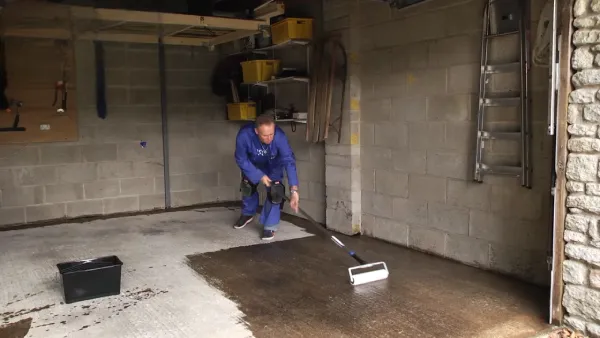
Advantages of Using PVA to Seal Concrete
PVA, also known as Polyvinyl acetate, is a popular choice among homeowners and contractors when looking for an effective sealant to protect concrete. PVA is renowned for its durability, cost-effectiveness, and wide range of applications.
Its ability to be tinted or colored makes it a great option for matching desired shades or colors. Homeowners can enjoy the ease of maintenance after application and long-lasting protection against weathering and damage from extreme temperatures or chemicals.
Durability is one of the primary advantages of using PVA to seal concrete. PVA has a low rate of absorption which makes it resistant to water penetration as well as other environmental factors such as temperature variations and sun exposure.
This means that surfaces sealed with PVA are more likely to withstand extreme weather conditions for longer periods of time, increasing their longevity. Additionally, due to its low absorption rate, PVA sealants do not require frequent reapplication in order to maintain their effectiveness making them cost-effective in the long run.
PVA is also widely used in a variety of applications ranging from roofing and industrial floors to driveways and sidewalks. Its versatility makes it a great choice for any sort of sealing project where durability and cost-effectiveness are important considerations.
Additionally its ability to be tinted or colored means that homeowners can choose any shade they desire making sure the surface looks aesthetically pleasing even after application.
Finally, once applied correctly, PVA sealants are very easy to maintain: all they require is occasional cleaning with mild soapy water in order to remove dirt build-up and keep their effectiveness intact over time.
This makes them attractive options when compared to other sealants that may need more frequent maintenance in order keep them functioning properly over time.
Disadvantages of Using PVA to Seal Concrete
Despite its many benefits, there are some potential drawbacks associated with using PVA sealants on concrete surfaces as well. One such issue is the potential health risks associated with certain types (such as formaldehyde) used in these products although many manufacturers have switched over to formaldehyde-free formulas in recent years this is still something worth considering when making your selection.
Another potential issue lies in the lack of breathability: since air cannot pass through these types of materials easily this can cause moisture accumulation leading ultimately lead problems such as mildew growth or deterioration over time if left unaddressed something that needs special consideration when dealing with outdoor projects exposed directly sunlight for example.
Finally, proper installation technique is paramount when applying these types of sealants; improper application can result in cracking or peeling down the line something that should be avoided if possible at all costs by following manufacturer’s instructions closely during installation process.
How long does PVA sealer take to dry concrete?
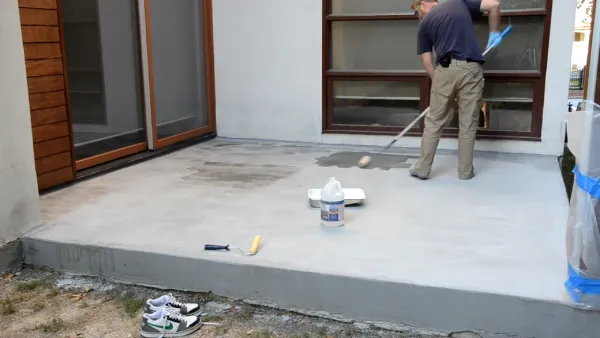
Using PVA sealer on concrete surfaces can take anywhere from several hours to a few days for it to dry completely, depending on the temperature and humidity of your environment. In general, you should anticipate that the drying process will take at least 24 hours or longer.
High temperatures, direct sunlight or windy conditions can significantly reduce the drying time in some cases. It is important to clean the surface thoroughly before applying PVA sealer, as any debris or dirt may prevent proper adhesion of the sealant. After application, you should also avoid any kind of physical contact with the surface until it has fully dried.
Is PVA sealer waterproof?
Yes, PVA sealer is waterproof and provides a durable protective coating against moisture and other elements. The protective layer formed by these types of sealers acts like a barrier against water penetration, which helps to protect and extend the lifespan of concrete surfaces.
Additionally, most PVA sealers are UV resistant which further protects them from damage caused by exposure to outdoor elements such as sun and rain.
Is PVA primer a sealer?
No, PVA primers are not considered as a form of sealing for concrete surfaces. Although they provide an adhesive base for certain finishes such as paint or stains, their primary purpose is to create an even base layer that allows these finishes to adhere more effectively.
Therefore, when sealing concrete surfaces it is important to use products specifically designed for this purpose such as silicone-based or acrylic-based sealers.
How do you mix PVA for sealing?
Mixing PVA for sealing requires mixing water with a powdered type of PVA solution or using ready-made liquid solutions according to manufacturer’s instructions. When using powdered solutions it is important not to add too much water as this could decrease its effectiveness as a sealant.
Instead aim for a paste-like mixture that can be easily applied onto concrete surfaces evenly with no lumps or chunks remaining in the solution. Ensure that all equipment used during mixing is properly cleaned before beginning this process so there are no contaminants that could affect the quality of your workmanship later on down the line.
What do professionals use to seal concrete?
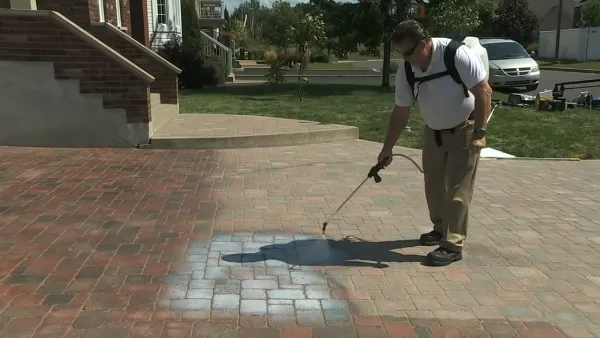
Professionals typically use either silicone-based or acrylic-based products when sealing concrete surfaces due their superior levels of durability and protection against moisture ingress compared to other products available on the market today.
Silicone-based products are generally more expensive but they provide unbeatable levels of waterproofing and breathability making them ideal for areas exposed to high levels of humidity over long periods of time whereas acrylic-based products offer good value for money with moderate protection against moisture but better resistance against cracking than silicone based options due their flexible nature upon curing completely.
Will PVA seal Oil in Pre used Commercial Concrete?
PVA sealers offer a practical solution for effectively sealing concrete surfaces, providing excellent protection against liquid penetration, including oil. Keep in mind contamination with oil may compromise their effectiveness, as poor adhesion to the surface can lead to less effective sealing. Ensure optimal results by prepping the surface adequately before applying the PVA sealant.
If you want to prevent oil stains on your concrete, you need the best coatings that work wonders. Acrylic sealers, epoxy coatings, and urethane coatings are the top coating options that fully protect your concrete from stains.
Acrylic sealers are versatile coatings suitable for both interior and exterior concrete. On the other hand, epoxy and urethane coatings work best on interior concrete surfaces.
Conclusion:
PVA is a great material to use for sealing concrete due to its superior adhesion and flexibility properties. Additionally, it’s relatively low-cost and easy to apply once correctly prepared while providing excellent protection from external elements such as water or chemicals.
As a result of all these advantages combined with its increased performance level compared to other materials used for similar applications, PVA is an attractive choice for many when it comes to protecting their investment in their homes or businesses.
We hope that this blog post helped provide some insight into the world of PVA so that when you go out next time looking for a sealant material you know exactly what you need.

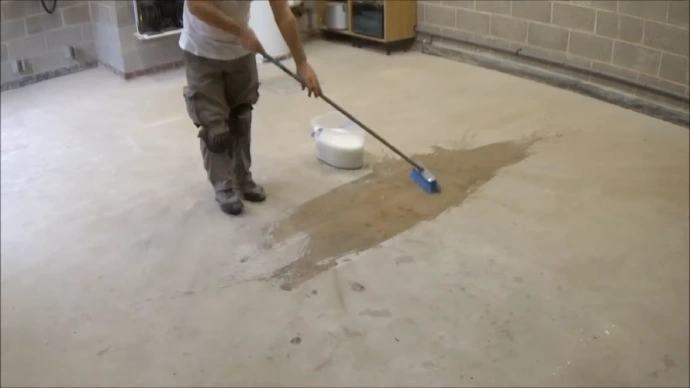

Will it seal oil in pre used commercial premises
Wallrock thermal liner is primarily designed for insulating purposes and improving energy efficiency in buildings. It is not specifically designed or marketed as an oil sealant. While it may provide some level of protection against moisture, it is unlikely to effectively seal oil or other liquid substances.